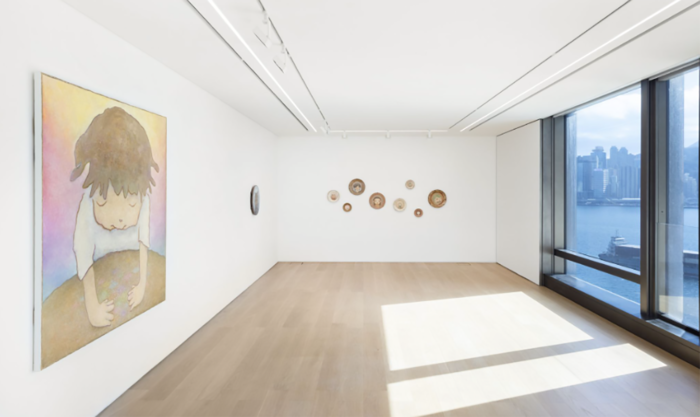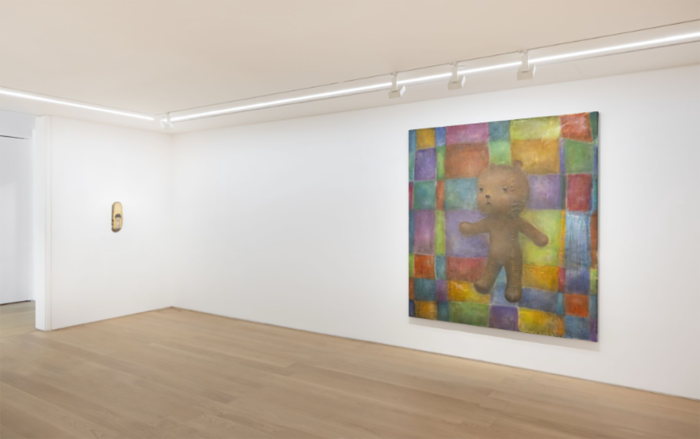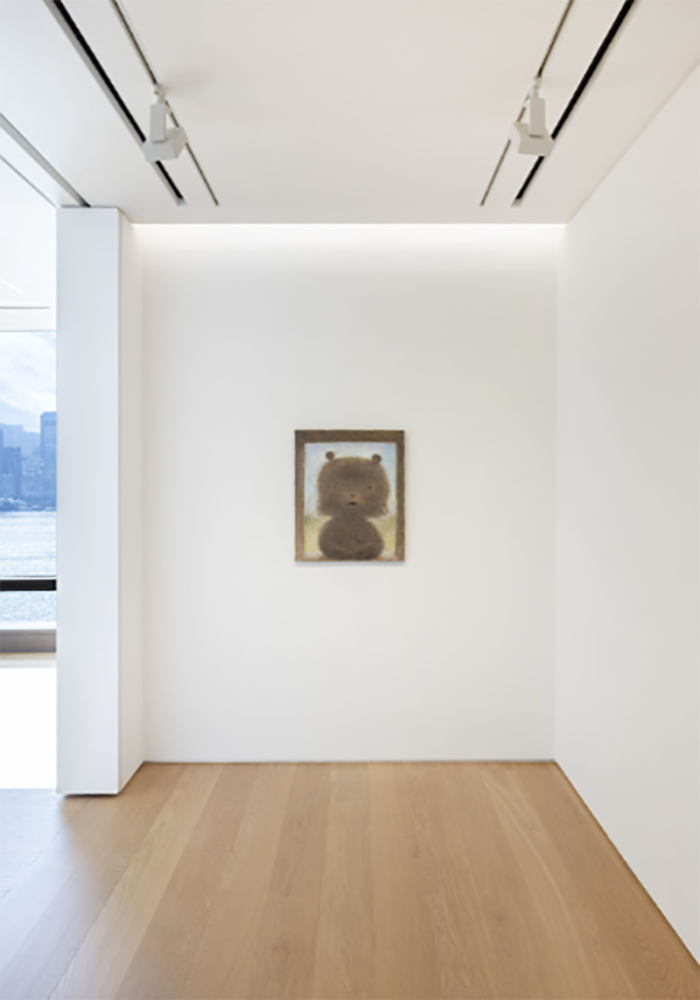





Otani Workshop: Portraits at Perrotin, Hong Kong
Dec 12, 2023 – Feb 17, 2024
Images courtesy of Perrotin
No more can I pen down a verse.
Where no poetry dwells, there it exists.
Only fragments of consciousness turn into these lines—
Consciousness, a realm of solitude.
In solitude felt, thus I exist.
Solitude, the very root of being;
Solitude, the truest wish for beauty.
Beauty, a symbol of eternity.
Junzaburō Nishiwaki, The Wanderer Never Returns (1947)
In the creative world of Otani Workshop, solitude pervades each individual. Subtle expressions, unwittingly revealed in solitude, encapsulate everything: smiles brought on by memories, foggy uncertainty about the future, and bewilderment in the present, all frozen in a fleeting slice of time. During his university leave, Otani embarked on a solitary journey, echoing Junzaburō Nishiwaki’s sentiment, “In solitude felt, thus I exist.” In his wanderings, Otani was in search of himself. Born in Shiga Prefecture and surrounded by pottery from a young age, his tactile memories of playing with clay as a child drew him back to Shiga. There, he infused every piece of his work with solitary visions and moments, turning the vague images in his mind into tangible “beings” for others to observe, imagine, and perceive, allowing the solitary to metamorphose into a palpable beauty that can be displayed, conveyed, and even communicated.
On his travels, Otani so observed, “Whether it is a modern or contemporary art museum, an ancient temple, or a historical museum collection. When viewed from the perspective of human history, fine arts, crafts, and other handicrafts are all part of an evolving spectrum.” It is this gradual transition that Otani kneads into his work, crystallizing into ceramic pieces, sculptures, and paintings. Therefore, “Otani Workshop” remains his chosen name. Signifying more than just a contemporary art studio in the Chinese context, it resonates with the Japanese tradition of pottery, aligning more closely with the concept of a workshop or factory in artisanal practice. Yet unlike traditional workshops, his is a solitary endeavor, devoid of any direct lineage or disciples. Otani’s wish for his creations to inhabit an ambiguous stage, blurring the lines between art and craft in our time and age, may stem from his own observations of this evolving spectrum.
Starting his creative career with pottery was a blend of coincidence and inevitability for Otani. The coincidence arose from a conversation with a university senior, who mentioned that in Japan, few sculptors can make a living from their art, casting doubt in Otani’s mind about pursuing sculpture. However, the inevitability lay in his fidelity to the tactile experience. “Directly touching and creating with soft clay brings me joy, and I believe this feeling can also be imparted to the audience.” Indeed, studies suggest that tactile memories are essentially similar to visual representations. Although there lacks sufficient data to reliably compare the intensity of these two stimuli, through Otani’s paintings in this exhibition, we can indeed feel the congruent perceptions of hand and eye.
Otani transfers the unique tactile sensation experienced during the ceramic-making process — the careful molding and shaping of clay with his fingers — onto two-dimensional mediums. He selects varied bases such as canvases, burlap sacks, wooden panels, and plates, and renders the tactile sensation through the dotting and layering of paint, creating a distinct textural effect in his paintings. At the same time, he severs the direct connection between touch and ceramics, expanding this bodily experience across various mediums. Thus, what was originally a specific tactile sensation evolves into an abstract sensibility, freely flowing through the imageries he creates.
Otani’s unwavering loyalty towards his own perceptions allowed him to break free from the increasingly rigid cage formed by knowledge, systems, and education in reality. When he doubted the educational approach of art schools, he chose to take a sabbatical to experience life directly. As a beginner in Shigaraki, the epicenter of Japanese ceramics, Otani persisted in his trials and learning, seeking help from local artisans to tackle technical challenges. Despite uncertainties about becoming a sculptor, he tirelessly worked in his studio from dawn to dusk, transforming the visions in his mind into tangible works in his hands.
While standardized norms continually suffocate genuine bodily perceptions, Otani has established his own standard as an individual. His world might appear hazy and elusive in his paintings, but such is the reality of our world. And it is in chaos and uncertainty that poetry blossoms and beauty flourishes.
For Otani, the individual reigns supreme, each harboring a unique soul. The artist’s expression is simple and straightforward, as he often says, “Each work portrays an individual, and I hope viewers will observe each one closely.” The titles he assigns are equally straightforward, stating facts such as “Boy,” “Bear,” “Sleeping Boy,” “Golden Boy,” and so forth. Each protagonist could be you, me, or anyone else, for we all share common memories and experiences.
The recurring figure of “Tanilla” — a small monster with horns and fangs, whose name is a portmanteau of Otani and Godzilla — might well be his self-portrait. Setting oneself as the standard, staying true to personal experiences, and deviating from established traditions and rigid conventions can, in some ways, equate to being perceived as a “monster.
In this upcoming exhibition at Perrotin Hong Kong, viewers will find themselves amidst characters and “little monsters” birthed from Otani’s imagination, traversing the worlds he conjured for each soul. Here, you might encounter echoes of your own solitude and moments of shared perplexity. And as you wander, you are free to let your eyes and heart take the lead. Come January 2024, Otani Workshop will unveil a solo exhibition at Kaikai Kiki Gallery. What metamorphosis will his characters undergo then? We await the next chapter of this story with bated breath.
Text by Sara Yuan Jing


